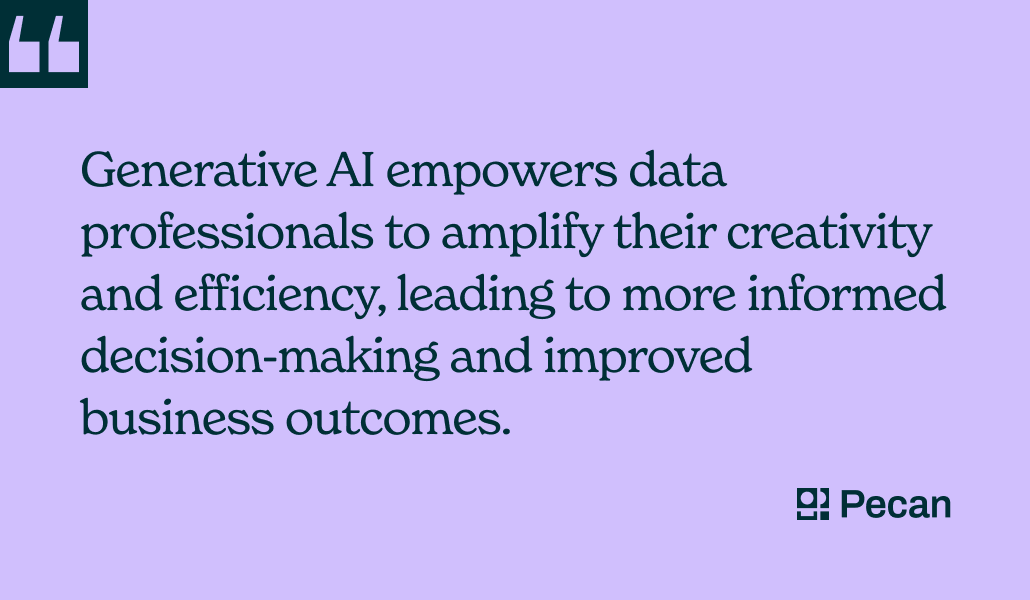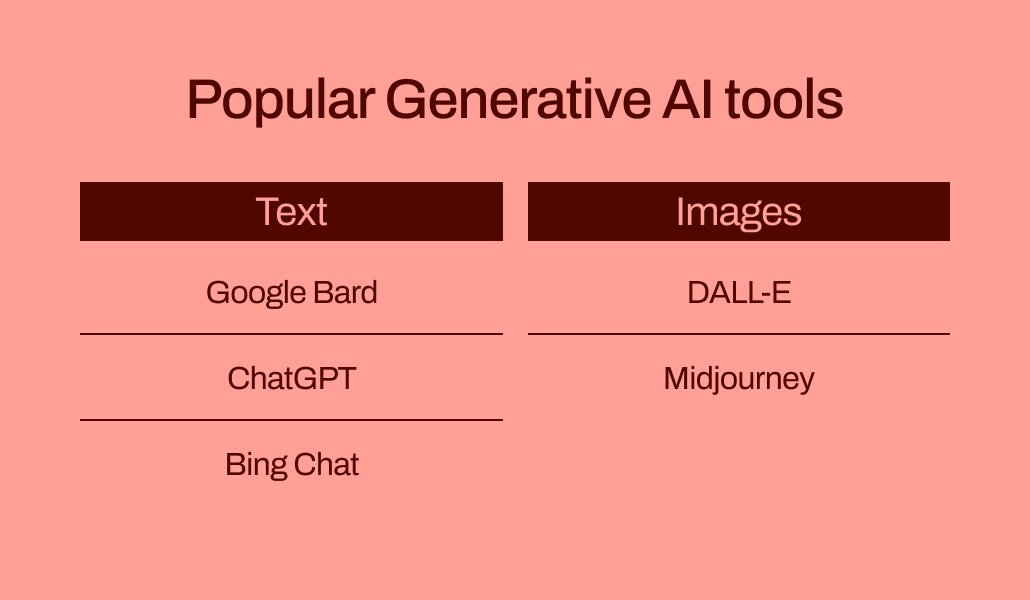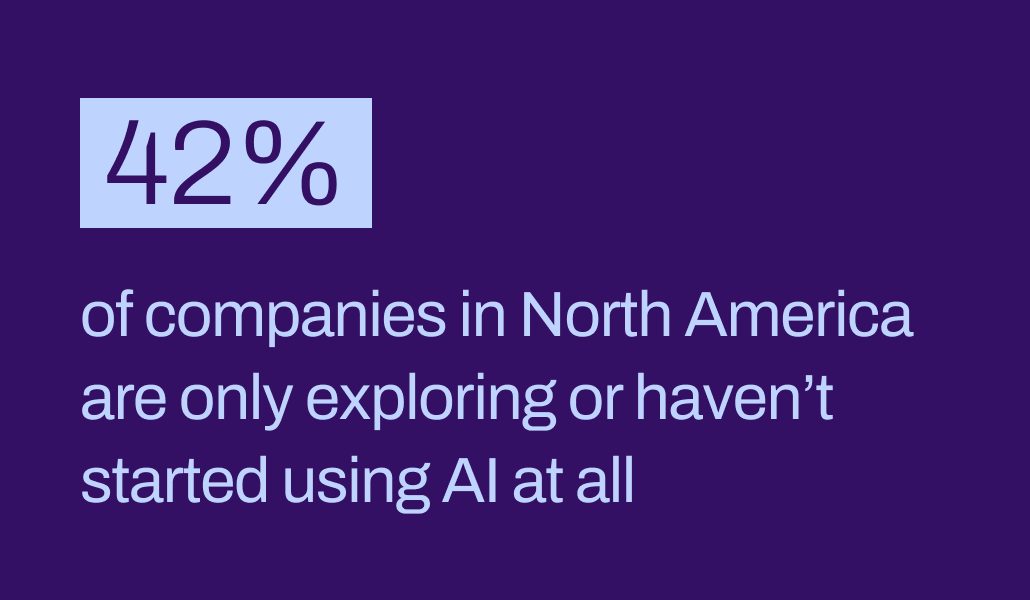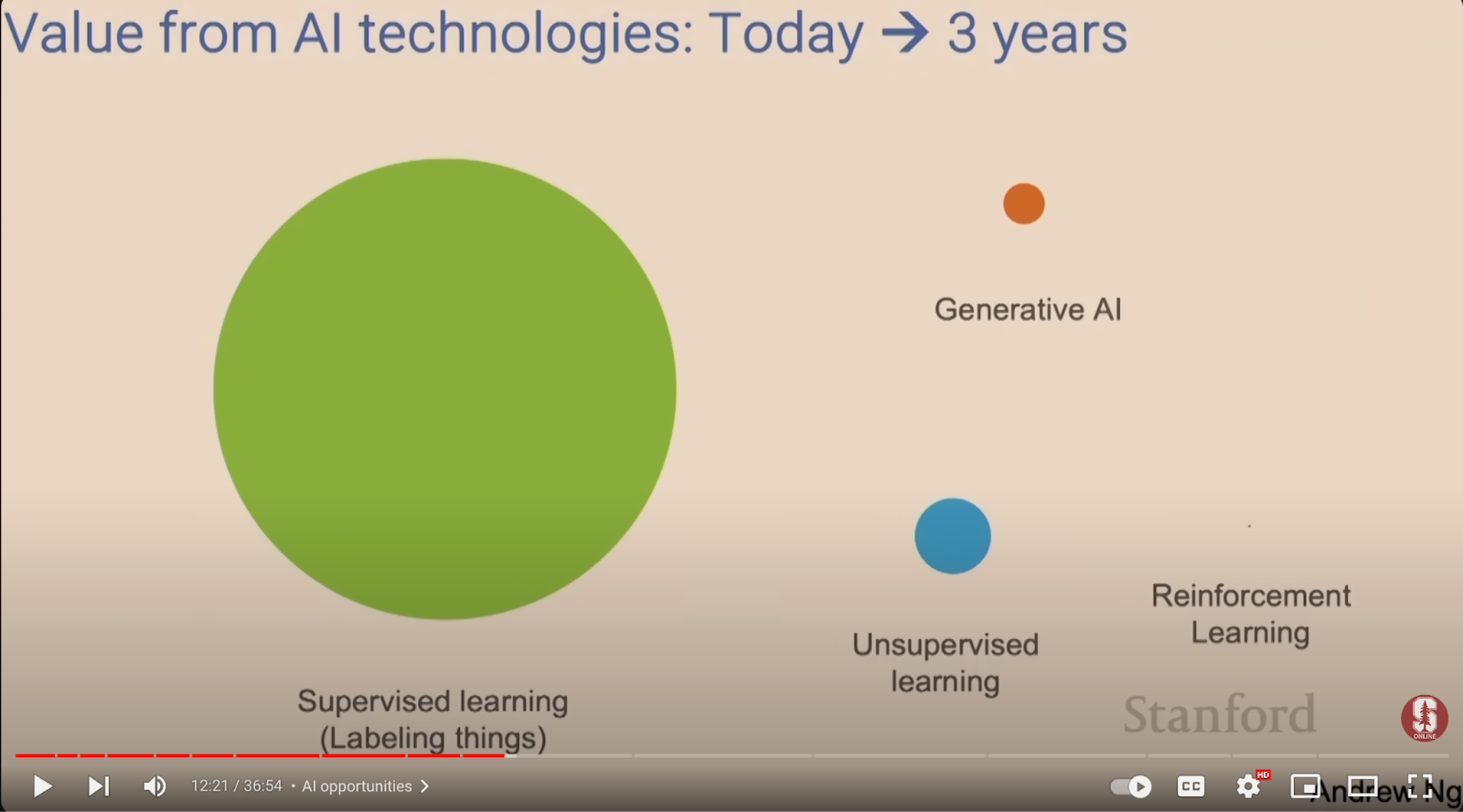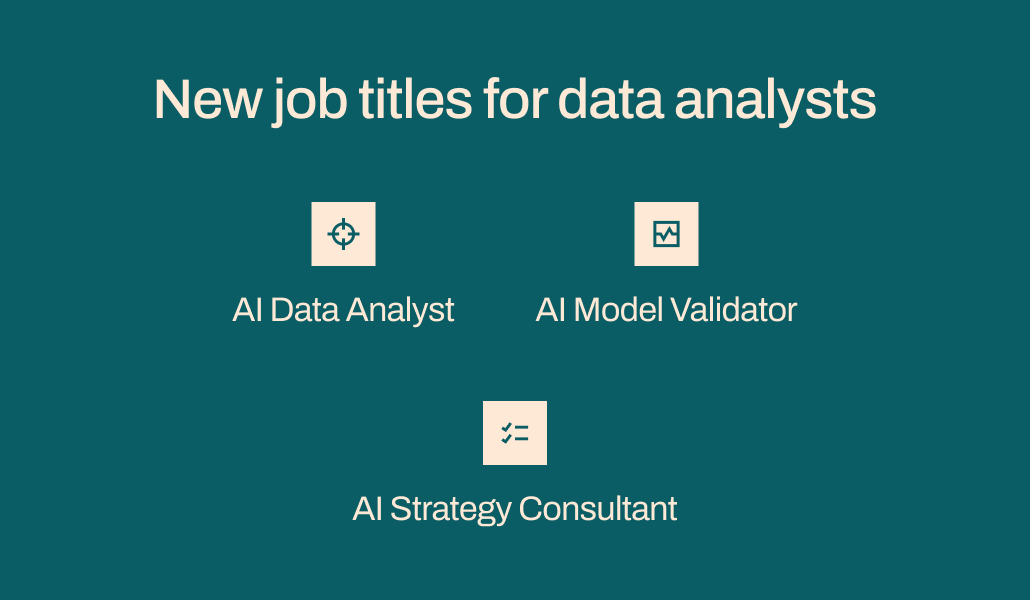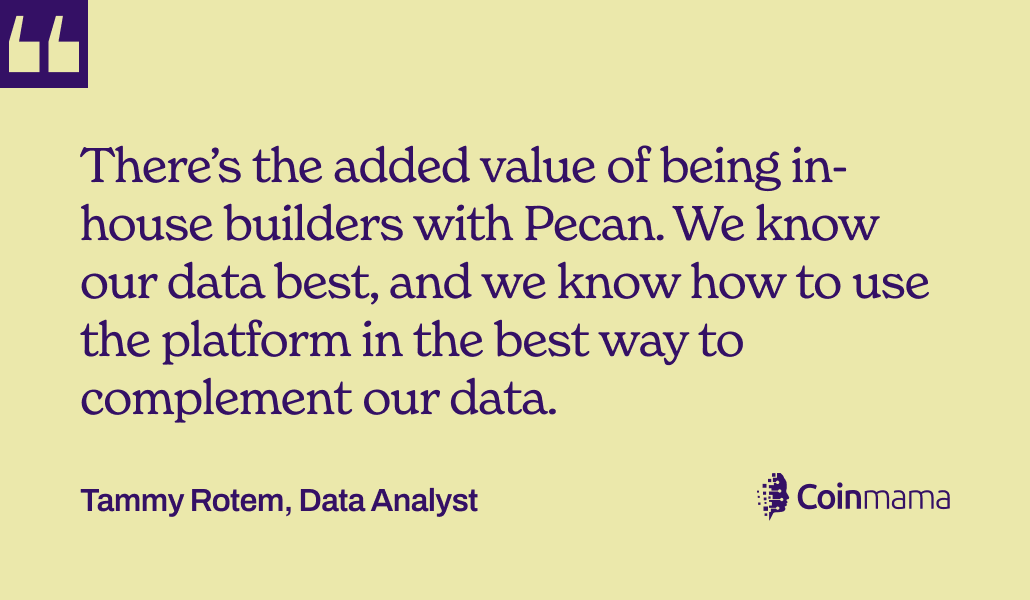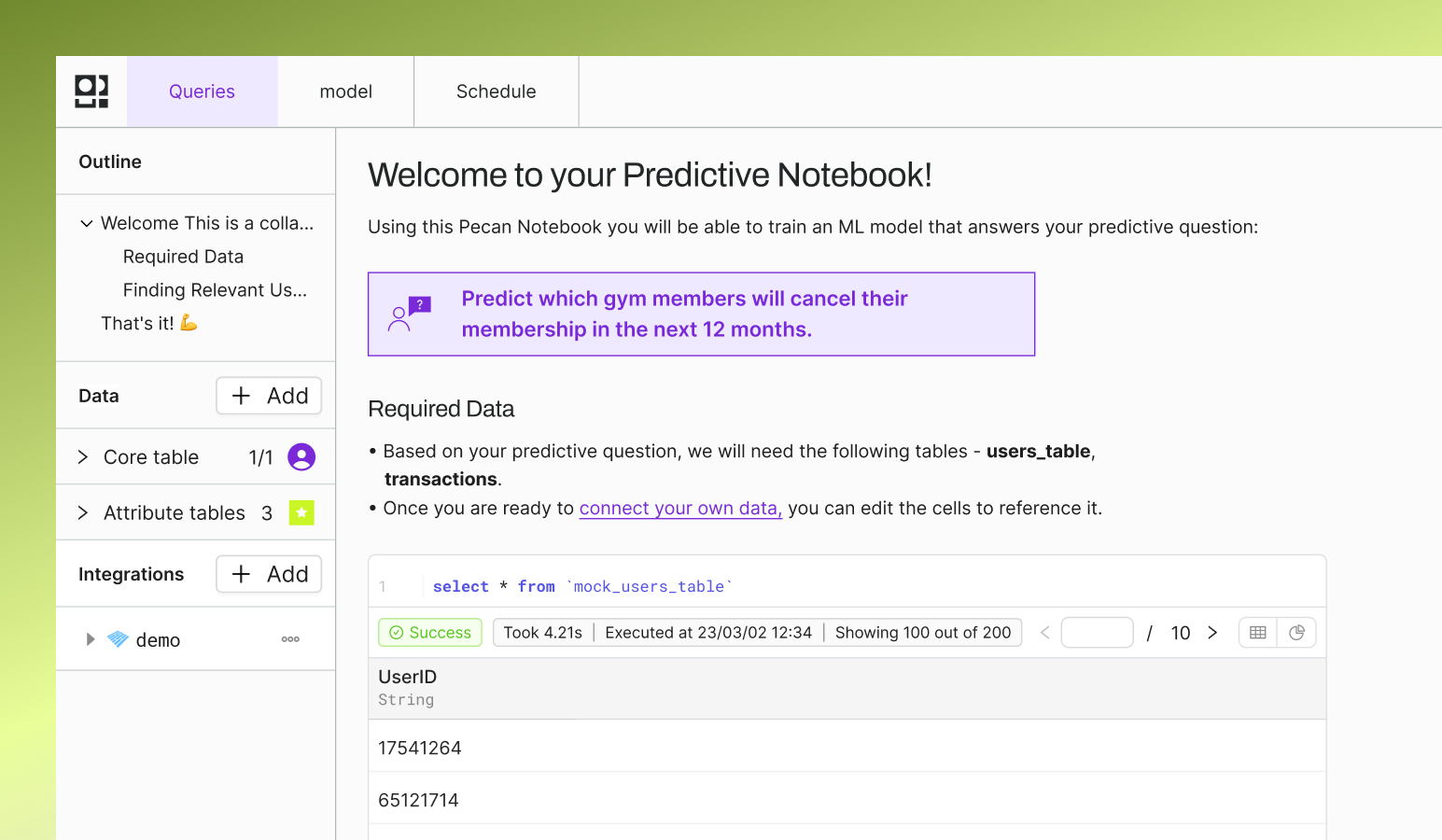In a nutshell:
- Generative AI is a transformative technology that empowers data professionals to enhance creativity and efficiency in tasks like data synthesis, predictive modeling, and more.
- Generative AI has many applications for data professionals, including its ability to streamline data workflows, improve analytics, and fuel innovation.
- Generative AI, built on large language models, is trained using vast datasets and generates content based on learned patterns.
- Generative AI and predictive AI differ in important ways, with predictive AI focused on making accurate predictions or forecasts based on historical data and patterns.
- McKinsey research suggests that generative AI could add trillions of dollars in value to the global economy, but predictive AI is still underutilized and holds massive potential for business growth.
- Generative AI can automate specific tasks for data professionals but is unlikely to replace human creativity and strategic thinking.
- Data professionals can productively integrate generative AI into their work, including tools like ChatGPT and Pecan’s Predictive GenAI.
Aren’t you excited to work in a field where everything is constantly changing? Or maybe it’s a little exhausting sometimes? Either way, we’re here to help you navigate the changing landscape of AI — especially the most recent innovations in data analytics and generative AI, as well as predictive AI. This transformative technology is reshaping how data professionals approach their work.
If you’ve ever wondered how to harness the potential of generative AI in your analytical endeavors, you’re in the right place. This blog post is your comprehensive guide, demystifying generative AI and revealing how it can best fit into your analytical toolkit.
Why should data analysts, data leaders, and other data pros care about generative AI? The answer lies in its ability to break down barriers and tackle tasks in new ways that traditional methods might overlook.
From data synthesis to predictive modeling, generative AI empowers data professionals to amplify their creativity and efficiency, ultimately leading to more informed decision-making and improved business outcomes.
Throughout this post, we’ll delve into the practical applications of generative AI, exploring how it can streamline data workflows, enhance analytics, improve predictive accuracy, and fuel innovation.
From understanding the fundamentals to implementing advanced techniques, this guide will equip you with the knowledge to start leveraging generative AI effectively in your data projects. Let’s revolutionize how you approach data analytics, generative AI, and predictive analytics.
Introducing Generative AI for Data Professionals: First, What’s AI?
Sure, you know the basics. But here are some fun facts to better equip you for your next trivia night — plus some important distinctions to help clarify the meanings of both GenAI and AI more broadly.
The History and Origins of AI
As a concept, AI dates back to the 1950s when John McCarthy, a computer scientist at Dartmouth College, first coined the term. (See? Useful trivia answer right there.) The idea was to create a machine that could mimic human intelligence.
Over the years, various AI techniques have developed, like machine learning, deep learning, and now generative AI, based primarily on large language models, or LLMs.
What AI Can Do
AI is a broad area of computer science focused on building smart machines capable of performing tasks whose end goal typically requires human intelligence. These might include understanding natural language, recognizing patterns, solving problems, and making decisions.
AI operates on algorithms and uses data to learn and improve its output or responses over time, making it an excellent tool for prediction and analysis.
How AI is Currently Used in Businesses
AI is already revolutionizing businesses across various sectors. In marketing, for example, AI-powered chatbots provide instant customer support, enhancing user experiences and increasing efficiency. In finance, machine learning algorithms analyze vast amounts of financial data to detect fraud and make accurate predictions for optimizing investment strategies. In healthcare, AI is used to diagnose diseases, analyze medical images, and develop personalized treatment plans.
And those are just a few examples. By harnessing the power of AI, businesses across all industries can gain a competitive edge through automating processes, improving decision-making, and unlocking valuable insights from their data.
As AI continues to advance, the possibilities for its application in business are limitless, paving the way for a future where intelligent technologies become integral to everyday business operations.
Data Professionals’ Perspective: What is Generative AI?
In the simplest terms, generative AI focuses on “generating” content. Whether crafting text or producing images, generative AI is the data-driven engine behind these endeavors, playing the role of writer or artist. There are a variety of use cases for GenAI.
When it comes to text-based content, prominent generative AI tools (innovative large language models) like Google Bard, ChatGPT, and Bing Chat have made significant strides in creating high-quality responses. Tools like DALL-E and Midjourney have also gained recognition for their remarkable image-generation capabilities.
How Does Generative AI Work?
Solutions like ChatGPT are built using large language models (LLMs). These models use natural language processing (NLP) algorithms to understand your input and generate code, text, or multimedia outputs. Even though it feels like magic, it follows a step-by-step process that’s as data-driven and logical as Spock (outside of “Amok Time,” of course).
First, generative AI models are trained. They analyze vast datasets and begin to discern relationships and patterns in the training data. All this information is stored within the GenAI model’s neural network, which acts like a human brain.
Once training is complete, the generative AI model can start generating content. It’s given a starting point or some input and uses the patterns it learned through text analysis or image analysis to guess what comes next. Think of it as a person with an amazing memory and never-ending access to books and pictures. The model uses that vast repository of references to help it make up its own stories.
Good practice in managing a generative AI model requires continuous development to ensure content is helpful, unbiased, accurate, and diverse. Through fine-tuning and sampling processes, generative AI can automate content creation and deliver personalized, engaging experiences for various applications, such as in marketing, media, art, and music.
How is Generative AI Different From Predictive AI?
Predictive AI, which includes predictive analytics, builds models capable of making accurate predictions or forecasts based on historical data and patterns. It’s like a crystal ball for businesses — except, instead of extrasensory perception (ESP) and a translucent rock, it relies on vast amounts of data and (usually cloud-based) servers with tremendous processing power.
Predictive analytics lets companies anticipate future trends, behaviors, or outcomes. Pecan AI, for example, uses predictive AI to help marketing, business intelligence, operations, and revenue teams predict outcomes about their campaigns, customers, and supply chains. Other platforms like HubSpot incorporate predictive AI capabilities to assist with tasks like customer segmentation.
How Does the Business Impact of Generative and Predictive AI Compare for Data Analytics?
The buzz around generative AI has been intense, and with good reason. It’s an exciting new technology with a variety of promising applications across industries. As McKinsey says:
Generative AI’s impact on productivity could add trillions of dollars in value to the global economy. Our latest research estimates that generative AI could add the equivalent of $2.6 trillion to $4.4 trillion annually across the 63 use cases we analyzed—by comparison, the United Kingdom’s entire GDP in 2021 was $3.1 trillion. This would increase the impact of all artificial intelligence by 15 to 40 percent.
Those are impressive numbers, but that last sentence is interesting: All the uses of generative AI are forecast to add just 15 to 40 percent to the impact of all AI. What’s included in “all AI”? Today, that’s largely a reference to predictive AI.
Predictive AI is still underutilized and represents massive potential for business growth. According to recent research from Workday, 42% of companies in North America haven’t started using AI at all or are only just beginning to research their options.
Notably, it’s been over a decade since machine learning tools became more accessible to companies. They’ve had the time, and many implementation options are available, from artisanal data science carried out by dedicated teams to low- and no-code platforms.
AI pioneer Andrew Ng illustrated a critical point in a recent talk. The total potential value of supervised learning (which includes many traditional machine learning methods) still dwarfs his projected value for generative AI:
Generative AI has a lot of exciting applications, but the real, large-scale business impact still lies in the thoughtful usage of good “old” machine learning and predictive AI techniques.
But again, despite the many growth opportunities presented to businesses by predictive AI, successful AI implementations have been surprisingly rare.
An important mechanism is missing to help bridge the gap between the promises made by AI and the ability to implement it productively. (We think that’s where Pecan’s Predictive GenAI is a critical step — but we’ll get to that in a few minutes.)
How does generative AI affect the work of data analysts and other data professionals?
Clearly, generative AI has some fantastic capabilities. But, looking at your daily tasks as a data professional, are they a little too amazing?
It’s totally reasonable for just about everyone to be a little concerned about the impact of AI on their professional work and the longevity of their careers.
Could generative AI be good enough at working with data to replace data analysts and other data roles at some point?
Here’s our take: While generative AI can automate certain aspects of data-related work, it’s unlikely to replace human creativity, strategic thinking, deep understanding, and the need for a human touch. Instead, it will continue to evolve as a tool that enhances our capabilities and productivity.
Yes, it’s becoming clear that AI will replace certain parts of data professionals’ roles. But many other parts will instead be enhanced or optimized, thus allowing them to do higher-quality work in less time.
Replacing some tasks will free up time and energy so data professionals can focus on more complex and strategic initiatives, from developing enterprise use cases to communicating insights to stakeholders and implementing data-driven business practices. These tasks are often overlooked or deprioritized as analysts work frantically to complete the more laborious parts of their job, like tediously cleaning data for yet another dashboard, or as data leaders draft yet another email.
Here are some examples of tasks that can be automated and how they can help you achieve better results:
- Routine tasks (e.g., data cleaning and preprocessing, fundamental statistical analysis, drafting text and communications): You can focus on higher-value tasks that require critical thinking and domain expertise. In a recent Salesforce survey, 75% of respondents said they hope to see generative AI benefits through automating tasks and improving work communications.
- Data visualization and reporting: Auto-generation of visualizations means you can spend less time on manual report creation. It frees up time for interpreting results and providing strategic recommendations. Additionally, generative AI can assist in data storytelling by generating compelling narratives based on data insights, as well as alternative visualizations and perspectives.
- Predictive analytics and forecasting: You can provide a new level of insights to the business: valuable predictive insights that inform better strategic planning.
As is expected for most professional domains, generative AI is unlikely to eliminate data professionals’ roles. Instead, it will amplify what they’re already able to achieve.
Moreover, just as new technologies have historically led to new jobs, generative AI will contribute to the emergence of novel job opportunities designed to harness this technology.
For example, for data analysts, roles will change and grow into titles like “AI Data Analyst,” “AI Model Validator,” and “AI Strategy Consultant.”
While the advent of generative AI will change roles, it’s truly a chance for data workers to level up in their careers while performing more fun and exciting data tasks.
Maybe best of all, it will automate the drudgery that too often comes with these projects.
How can data professionals learn to integrate generative AI into their data analytics work?
What about the specifics of using GenAI in your day-to-day data analytic operation, right now?
One of the most used generative AI tools today is ChatGPT, so let’s start there. There are three ways you can get ChatGPT to support your data work.
- Use ChatGPT as your study buddy in learning and understanding statistical and technical concepts in AI data analytics. Its vast knowledge base and language-generation capabilities allow you to grasp complex concepts quickly, bridging the gap between advanced theories and practical understanding. For instance, it can provide insights into feature engineering for predictive modeling, helping you optimize strategies and improve model quality.
- Gain business and industry insights effortlessly with ChatGPT. Engage in conversations to tap into a wealth of knowledge about specific industries, KPIs, benchmarks, and emerging trends. The AI summary of these topics is an efficient way to learn valuable information quickly. They can also support idea generation for new projects. With these conversations, you’re equipped with the insights needed to align data initiatives with business goals, contributing meaningfully to success.
- Do you love fine-tuning SQL queries? If that’s not the highlight of your day, you’re in luck. ChatGPT can help out. The tool simplifies the SQL query-writing process, making it accessible for those with limited SQL expertise. From basic tasks to complex statements, ChatGPT guides you through syntax, table joins, data filtering, and aggregation. No need to be an SQL expert — ChatGPT’s chatbot interface empowers you to navigate databases and perform data analysis tasks efficiently.
However, it’s crucial to acknowledge some caveats. While ChatGPT’s capabilities are impressive, relying on it exclusively isn’t a good practice. Information may not be 100% accurate or current, and ChatGPT cannot directly access databases.
Moreover, be mindful of using sensitive data, as ChatGPT logs every conversation, potentially exposing personally Identifiable Information or confidential business data.
But with caution and diligence, ChatGPT can be your new work buddy, easing your path through everyday tasks with your data analytic tool.
And, of course, many other GenAI tools are evolving to help data professionals work more quickly and deeply with their data. For example, Pecan’s Predictive GenAI and cloud platform use generative AI to empower data professionals and business teams to do predictive modeling far more quickly and easily. More on that soon.
Generative or predictive AI: What’s the right tool to supplement data analytics?
Another way to think about how you can integrate generative AI into your work as a data professional is to break down your daily tasks into two buckets — generative and predictive. Are you generating content with this daily task (for example, developing a data visualization or a strategy report), or are you working on foreseeing the future in some way (for example, forecasting customer demand for your company’s hundreds of products)?
For both of these kinds of tasks, generative and predictive AI can help you at one phase or another. Let's dig deeper into what both can do for your team.
How can data professionals use generative and predictive AI to impact their organizations?
Data leaders are increasingly turning to generative AI projects to drive innovation and gain a competitive edge. The primary motivation stems from the transformative capabilities of generative AI in overcoming traditional limitations in data analytic tools.
Generative AI finds impactful applications beyond data analysis, particularly in marketing and customer service. For example, in marketing, generative models in cloud platforms have proven valuable for content generation, helping brands create compelling and personalized messaging.
By analyzing consumer behavior, generative AI can craft targeted advertisements, social media content, and email campaigns tailored to individual preferences. This streamlines marketing efforts and boosts marketing efficiency, and enhances customer engagement by delivering content that resonates with specific audiences.
In the customer service domain, chatbots powered by generative AI have become instrumental in providing efficient and responsive support through text generation. These intelligent chatbots can understand and generate human-like responses, address customer queries, resolve issues, and even facilitate product recommendations.
By automating routine interactions, businesses can improve the overall customer experience, ensuring quicker and more accurate responses while freeing human agents to focus on more complex and nuanced customer interactions.
Generative AI’s impact on marketing and customer service also extends to sentiment analysis. Generative models can distill sentiments and trends by analyzing vast amounts of customer feedback, reviews, and social media comments, offering businesses valuable insights into customer preferences, concerns, and emerging patterns.
This data-driven approach enables companies to adapt their marketing strategies and enhance their customer service offerings, ultimately fostering more robust relationships with their customer base.
Generative AI transforms marketing and customer service by facilitating personalized content creation, powering intelligent chatbots for efficient support, and extracting meaningful insights from customer sentiments. Its applications in these domains contribute to more effective communication, improved customer experiences, and data-driven decision-making for businesses.
Where generative AI doesn’t measure up for data professionals
These are important applications, to be sure. But as noted above, there’s even more untapped business potential in using predictive AI — well beyond that of generative AI. Data analysts and leaders should consider whether dabbling in generative AI is genuinely worthwhile when the vast potential and end goal of predictive AI has not yet been achieved in their organizations.
Admittedly, it’s been difficult for many organizations to adopt predictive analytics and AI. To be sure, many have moved forward with building out data science teams (expensive and challenging to source), hand-crafting artisanal AI models (time-consuming and often poorly implemented), and adding data leaders charged with the difficult task of realizing ROI on these investments.
Time and time again, though, this full-blown approach has failed. And it’s neglected to recognize one of the greatest assets within any company: the data analysts who sit on business teams or are part of more extensive data teams. These data pros know their data, understand the business, and, most importantly, recognize the connections between the data and how it can resolve business problems.
Should every data analyst learn to code, then? If they want to learn, that’s cool — it’s undoubtedly a valuable skill. However, it’s a considerable investment of time and energy, and other routes to success with predictive analytics are now widely available.
For most data analysts, the best and fastest way to generate additional business value is using a low-code machine learning platform that allows you to 1) leverage your existing skills and 2) move from traditional business intelligence to predictive analytics.
Gone are the days of creating rough statistical models or business rules that use only two or three variables to anticipate business trends and behavior. Instead, you can employ machine learning to analyze historical data based on hundreds of variables and predict individual customer behavior with high accuracy.
And if you’re a data leader, consider the hiring costs for data scientists versus the cost to upskill internal employees. A mid-level data scientist can make about $150K in base salary, not to mention other aspects of compensation. Regional differences can push that salary to over $200K. And that’s just a single data scientist. For many AI projects, companies may also need software engineers (also paid about $150K apiece) and data engineers (about $129K) to take models into production and implement them into business processes.
Upskilling data analysts through the power of AutoML platforms and other AI solutions can give your data team the critical skills it needs while saving massive hiring costs. That opportunity can also make data analysts’ jobs more satisfying and offer growth opportunities that support professional development and retention.
Then, there’s the direct benefit to your organization. Many data analytics teams have huge request queues for new reports, dashboards, analytics, and so on. Often, teams can only service the most critical initiatives. AI can help automate and accelerate many steps of the data analytics process to assist you and your team in providing more business stakeholders with the vital insights they need.
Whatever your data role, evolving from descriptive insights to predictive insights will allow your company to anticipate potential problems and opportunities, make more informed decisions quickly, and take proactive measures to improve its bottom line.
And, importantly, those predictive insights should be made as accessible as possible to business teams. This democratization extends the benefits of predictions beyond just a few teams who can access data science resources and complete projects promptly.
In short, while adopting generative AI may be top of mind due to the headlines and buzz it’s generated — moving to implement predictive AI solutions may have a more significant impact and be easier than you might have thought.
An example of data analytics success with predictive analytics
Here’s an example of how teams can achieve these benefits. Coinmama’s data analysts use Pecan’s low-code predictive analytics platform to understand customer behavior better. This has allowed them to reduce internal costs and inefficiencies dramatically.
In the quest to mitigate chargebacks and identify fraudulent transactions, Coinmama faced the challenge of evolving from static, manual analytic methods. Initially relying on a custom-written SQL script applying fixed business rules, Coinmama sought a more dynamic approach to enhance efficiency and identify emerging risk patterns within their data.
Pecan’s platform automated and democratized data access for Coinmama’s data analysts. Predictive models built on Pecan’s platform now assess each transaction’s likelihood of fraud based on relevant features, with results seamlessly integrated into Coinmama’s Snowflake data warehouse and visualized on a Tableau dashboard.
With highly precise predictions from Pecan, the payments team gained the ability to make swift, data-driven decisions, prioritizing transactions efficiently. Notably, the team reduced the number of transactions requiring scrutiny by two-thirds, saving an average of 8 minutes per transaction and a remarkable 35 weekly work hours.
Beyond time savings, the team also got better results. Coinmama’s predictive modeling uncovered 15% more fraudulent transactions than their previous manual scripts.
The synergy between Pecan’s predictive analytics platform and Coinmama’s analytical prowess streamlined processes and democratized internal data access, helping foster collaborative cross-team data discussions on emerging trends and surface insights into customer behavior dynamically.
By providing their analysts with predictive capabilities, Coinmama was able to enhance their fraud detection capabilities significantly, conserve resources, and improve team alignment — considerable benefits across the board.
Transforming predictive analytics with generative AI: Pecan’s Predictive GenAI
Today, data analysts and other business professionals can dive into predictive analytics more easily than ever with new technology options. At Pecan, we’ve integrated generative AI into our innovative, intuitive predictive analytics platform with what we call Predictive GenAI.
So, what does the “GenAI” component bring into the picture?
As you likely already know, humans can have in-depth, insightful interactions with generative AI tools using simple natural language. Conversations with GenAI can lead to all kinds of creative output: text, images, audio, synthetic data, code, and more. If you’ve ever pestered ChatGPT with silly questions, you know that GenAI is remarkably adept at contending with the variety of input humans can offer.
Pecan’s Predictive GenAI transforms humans’ input into predictive modeling, lowering the barrier to entry to predictive AI significantly.
Our Predictive GenAI capabilities make it possible to translate your business concern into a predictive model faster than ever — no matter how specific or niche your needs may be. You can read more about why we built Predictive GenAI.
First, Predictive Chat will gather essential information about your goals and help you define a “predictive question” that your model can answer. Coming up with a question might sound like a relatively minor step in the process, but we’ve found it’s critical.
For example, consider a customer churn prediction model. “Churn” for one business might mean they never hear from a customer again; for another, it might represent a reduction of activity (but not a complete end of the relationship).
Defining these details as part of the predictive questions is like specifying the precise amount of ingredients for a recipe. Sure, water is part of your ingredient list for baking bread, but the amount of water makes an enormous difference in your final product.
Predictive Chat leads you through determining all of these critical ingredients to make creating a successful predictive model as easy as possible. No guesswork is required — you’ll know from the start exactly what you’ll be predicting and that it will be relevant to your business’s needs and goals.
Then, you’ll move forward to a SQL-based Predictive Notebook experience that guides your next steps. Using GenAI, our Predictive Notebook is pre-filled with the SQL queries, so you don’t have to write them yourself (which also reduces the risk of human error). Just tweak them where needed to make any adjustments you’d like.
You won’t have to struggle to parse out which fields are relevant, which tables to join and how, or which aggregations you’ll need. Check out more details on this process on our How It Works page.
Following these steps, Pecan’s powerful automated platform handles model development and deployment. That includes automated feature engineering and selection, model selection, model evaluation, deployment into production, and monitoring. This technology option makes it easier than ever to get started with predictive modeling.
We believe that putting predictive and generative AI together will lead to better business outcomes, bringing these technologies to a broad audience across organizations with a lower barrier to entry.
Pecan’s Predictive GenAI introduces a powerful way to gain business value by combining these technologies. Users can jump right into the Pecan platform and start their predictive journey far more quickly and efficiently than any other tool or approach makes possible.
If you’re ready to use data analytics and generative AI — plus powerful predictive analytics — for maximum impact, give our Predictive GenAI a try now. Sign up for a free trial today and get started fast.
